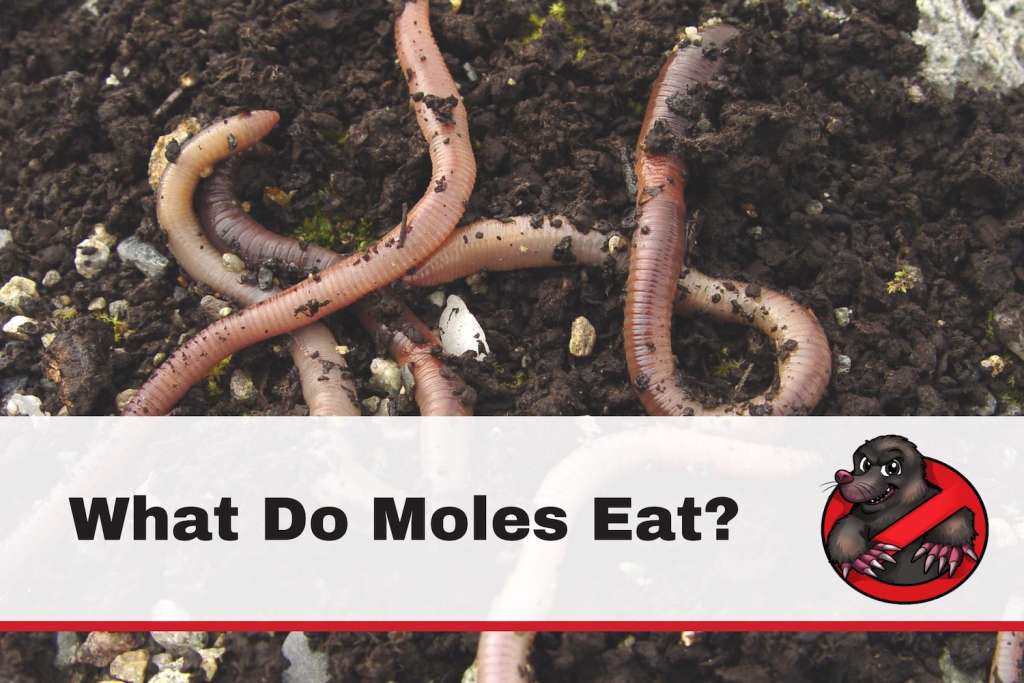
What Do Moles Eat?
In our eternal battle with Washington’s moles, we have come to learn a lot about them as creatures; one of the most valuable things to know when dealing with moles is their diet. What do moles eat? Understanding what moles eat is crucial not only for effective mole control but also for appreciating their role in the ecosystem. So, let’s delve into the culinary preferences of moles and why they might be attracted to your garden or lawn.
The Mole Menu: What Do Ground Moles Eat?
Moles are insectivores, meaning their diet primarily consists of insects and other small invertebrates. They feed on small wildlife, eating bugs and worms. Here’s a breakdown of their favorite foods:
1. Earthworms
Moles absolutely love earthworms and they make up the bulk of the mole diet. These nutrient-rich worms are abundant in moist, rich soil, which is why moles often tunnel through gardens and lawns. Average ground moles can consume up to their body weight in earthworms each day!
2. Grubs & Larvae
Grubs, the larvae of various insects, are another favorite. These include beetle larvae and other subterranean insects that moles find while burrowing. Grubs are high in protein and provide essential nutrients for moles.
3. Snails & Slugs
If you’re an avid gardener, you may have a special hatred for snails and slugs; luckily, moles enjoy chowing down on these slimy invertebrates. If you have a snail or slug problem, moles may actually be helpful in curbing their presence.
4. Ants, Termites, Beetles, Centipedes, & Other Insects
Moles will also consume any other type of small insect or invertebrate they encounter underground; this includes ants, termites, beetles, centipedes, and many others. These creatures supplement their diet, providing additional variety and nutrients.
Mole control: how do you keep moles away?
Unfortunately, the moles’ unending quest for tasty bugs can spell disaster for your lawn or garden. Their pervasive tunneling can destroy roots and create unsightly holes in your lawn. If you’re dealing with a mole infestation, there are a few mole removal and deterrent tricks you can use. Understanding what moles eat is the first step in managing their presence. Here are a few tips that should help keep moles at bay:
-
Reduce Food Sources: Treating your lawn for grubs and other insect larvae can make it less attractive to moles. Consider using organic or chemical treatments to reduce these food sources.
-
Create Barriers: Installing physical barriers, such as underground fences, can help prevent moles from entering certain areas of your yard.
-
Use Natural Deterrents: Certain plants, like marigolds and castor beans, are known to repel moles. Planting these around the perimeter of your garden can act as a natural deterrent.
-
Professional Control: Sometimes, the best way to deal with a mole problem is to call in the wildlife removal and pest control experts. At Got Moles?, we offer effective and humane mole control solutions tailored to the specific needs of Western Washington residents.
Moles are fascinating creatures with a diet that plays a crucial role in controlling insect populations. However, their tunneling habits do wreak havoc on gardens and lawns. By understanding what moles eat and taking proactive measures, you can manage their presence and maintain a healthy, beautiful yard.
If you’re dealing with a mole problem and need professional assistance, don’t hesitate to contact us at Got Moles?. We’re here to help you enjoy a mole-free landscape! Got Moles? offers expert mole control services throughout Western Washington. Contact us today to learn more about our services and how we can help you reclaim your yard from these underground invaders.

